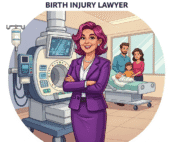For individuals with Cerebral Palsy (CP) who are non-verbal or have limited verbal communication, technology plays a transformative role in bridging communication gaps and fostering connection with the world around them. Augmentative and Alternative Communication (AAC) technologies offer a diverse range of tools and strategies that empower non-verbal individuals with CP to express their thoughts, needs, and desires, leading to greater independence, social inclusion, and overall quality of life.
Understanding the Communication Challenges in Non-Verbal CP
Cerebral Palsy can affect the muscles involved in speech production, making verbal communication difficult or impossible. This can lead to frustration, isolation, and limitations in expressing oneself. However, advancements in technology have opened up numerous avenues for non-verbal individuals with CP to communicate effectively.
Types of Technology Enhancing Communication
A wide array of technological solutions exists to support communication for non-verbal individuals with CP:
Low-Tech AAC
These simpler, often non-electronic tools can be highly effective:
- Picture Communication Boards (PECS): Users exchange picture cards to communicate messages.
- Communication Boards with Letters, Words, and Phrases: Individuals point to letters, words, or pre-programmed phrases to convey their thoughts.
- Eye-Gaze Boards: Users communicate by looking at symbols, letters, or words on a board.
- Yes/No Systems: Simple methods like head nods, eye blinks, or finger movements to answer yes/no questions.
High-Tech AAC
These electronic devices offer more sophisticated communication options:
- Speech-Generating Devices (SGDs) or Voice Output Communication Aids (VOCAs): These devices produce synthesized or digitized speech when a user selects symbols, words, or phrases.
- Dedicated AAC Devices: Devices specifically designed for communication with robust software and various access methods.
- Tablets and Smartphones with AAC Apps: Mainstream devices loaded with specialized communication apps offering symbol-based communication, text-to-speech, and customizable vocabulary.
Access Methods: Tailoring Technology to Individual Abilities
A crucial aspect of AAC technology is the method by which individuals can access and control these devices. Common access methods for individuals with CP include:
- Direct Selection: Using fingers, hands, or a stylus to directly touch the screen or buttons.
- Scanning: A selection cursor moves through options on the screen, and the user activates a switch (e.g., a button press, eye blink, head movement) to make a choice.
- Eye-Gaze Technology: Sensors track eye movements, allowing users to control the device by looking at specific areas on the screen.
- Head Tracking: Cameras track head movements, which are translated into cursor control on the screen.
- Switch Control: Various types of switches (e.g., button, joystick, sip-and-puff) can be activated by different body parts to navigate and select options.
Benefits of Technology in Enhancing Communication
Technology offers numerous benefits for non-verbal individuals with CP:
- Increased Independence: Individuals can express their needs and wants without relying solely on others to interpret them.
- Improved Self-Esteem and Confidence: Having a voice and being understood fosters a sense of empowerment and self-worth.
- Enhanced Social Interaction: Technology facilitates communication with family, friends, educators, and the wider community.
- Greater Educational and Vocational Opportunities: Effective communication opens doors to learning and employment.
- Reduced Frustration and Behavioral Issues: Providing a means of expression can decrease frustration and related challenging behaviors.
- Access to Information and Entertainment: Many AAC devices also offer access to the internet, social media, and other forms of digital content.
- Personalized Communication: Technology allows for customization of vocabulary, symbols, and voice output to match individual preferences and needs.
For more information and resources on assistive technology and communication strategies for individuals with Cerebral Palsy, please visit Assistive Technology on CP Family Hope.
The Role of Assessment and Collaboration
Selecting the most appropriate AAC technology requires a thorough assessment by a multidisciplinary team, including speech-language pathologists, occupational therapists, and assistive technology specialists. This assessment considers the individual’s communication needs, physical abilities, cognitive skills, and preferences. Collaboration with the individual, their family, and caregivers is crucial for successful implementation and ongoing use of AAC.
Moving Forward: Empowering Voices Through Technology
Technology has revolutionized communication possibilities for non-verbal individuals with Cerebral Palsy. By providing access to a diverse range of AAC tools and personalized access methods, technology empowers individuals to express themselves, connect with others, and participate more fully in all aspects of life. Continued advancements in this field promise an even brighter future for unlocking the voices of those who cannot speak verbally.
FAQs: The Role of Technology in Enhancing Communication for Non-Verbal Individuals with CP
What is AAC, and how does it help non-verbal individuals with CP?
Augmentative and Alternative Communication (AAC) encompasses various tools and strategies used to supplement or replace spoken communication. For non-verbal individuals with CP, AAC technologies provide a means to express thoughts, needs, and ideas effectively.
How do professionals determine the best AAC technology for an individual with CP?
A multidisciplinary team conducts a comprehensive assessment of the individual’s communication needs, physical abilities (access methods), cognitive skills, and preferences to recommend the most suitable AAC system.
Is learning to use AAC technology difficult for individuals with CP?
Learning curves vary depending on the complexity of the technology and the individual’s abilities. With proper training, support, and patience, most individuals can learn to use AAC effectively.
What are some examples of high-tech AAC devices?
Examples include dedicated speech-generating devices (SGDs), tablets with AAC apps (like Proloquo2Go or TouchChat), and devices controlled by eye-gaze or head tracking technology.
How can families support the use of AAC technology at home?
Families can create communication-rich environments, model the use of the AAC device, be patient and encouraging, and collaborate with therapists to reinforce communication goals at home.
👉 Fill out our FREE Consultation Form today to speak with a legal expert. Your case could make a difference.





Rehabilitation Technology Birth Injuries: Advancing Recovery & Independence
[…] therapies are often supplemented by groundbreaking advancements in technology. Rehabilitation Technology Birth Injuries survivors benefit from is transforming the landscape of physical and cognitive recovery, offering […]